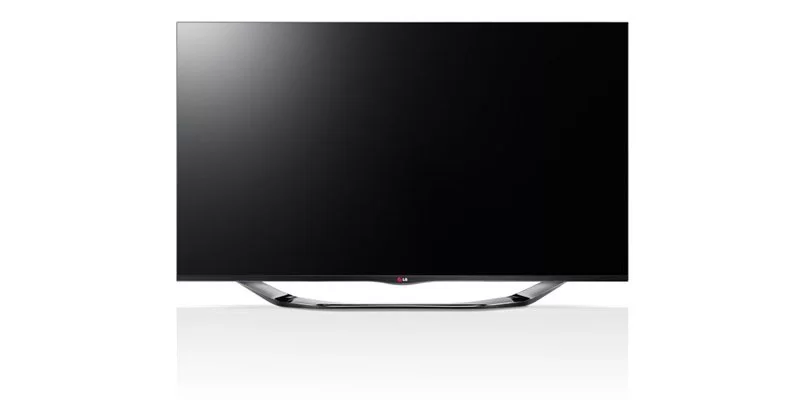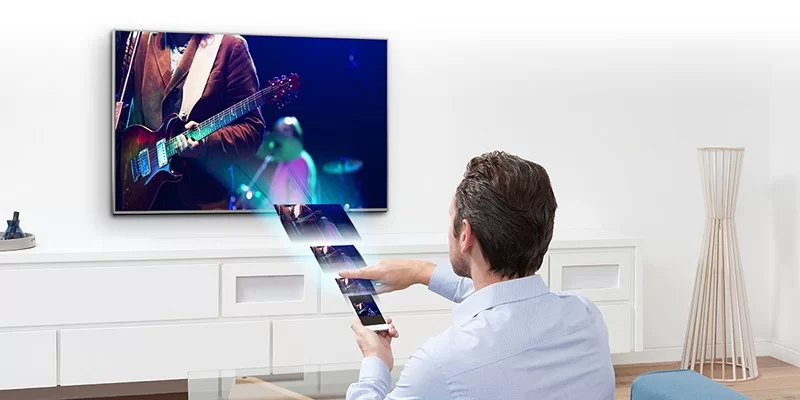A few years ago, the difference between a monitor and a TV was significant. The latter were equipped with a plasma (sometimes LCD) matrix, while the monitors boasted Full HD resolution with modest dimensions. Today, both devices are quite competitive and the choice of the right one depends mainly on personal preferences. What is better to choose for a computer: a monitor or a TV? Our experts know the answer.
Features of a monitor for a computer when working with graphics, games

Monitors are often used as a practical and functional addition to both desktop and laptop computers. Their main task is to accurately transmit the signal and respond properly when the user interacts with the resulting image. This kind of element is ideal for close work: it accurately conveys the smallest details.
Since the monitor resolution is higher than that of TVs, they are considered universal because they support various video formats. It is the monitor that will more accurately convey the picture of the game, regardless of the year of its release, but on TV the difference in quality will immediately be noticeable.
Well, if we talk about the negative specifics, we can’t help but note the high cost of monitors, which will provide high quality pictures when using colorful and “heavy” games. So connoisseurs and professional gamers will have to spend money. In addition, the purchase of an expensive monitor will have to be supplemented by the purchase of quality speakers to provide a good sound system in accordance with the image.
If we talk about working with graphics, then monitors, due to the ability to transmit a signal clearly and without interference, are suitable for performing any graphic operations: they correctly transmit fonts and the smallest pictures.
ON A NOTE. Regardless of the cost of the model, the monitor allows not only to optimize the image, but also to increase it without loss of quality, with the ability to carefully examine the pixels. The monitor is suitable for working with any graphic editors. Even an impressive size diagonal is ideal for working with graphics, it is easily located on the table and does not create discomfort during operation even for a picky specialist.
Features of a TV for a computer when working with graphics, games

Like monitors, TVs are suitable for transmitting audio and video signals in computer games. Such devices are a great option for those gamers who want to feel the realism of the picture, to see computer characters almost in full growth. This is an undoubted plus of TV devices, because at a reasonable price you can purchase a diagonal of more than 32 inches and get a realistic, juicy image.
Remarkably, the TV automatically improves the image quality and increases it, if necessary, in case of a change in resolution. You can determine the speed of the “reaction” of the device when conducting a test in the store or when analyzing its characteristics. The undoubted plus of the TV is the possibility of using it not only for games, but also for high-quality movie viewing. An unpleasant feature can be called the bulkiness of the product. In addition, its comfortable operation is possible only at a distance of at least 1 m from the eyes.
In order for the TV to be used to perform graphic tasks, you will need high-quality LED-type backlighting, as well as the presence of an IPS matrix. It is these two conditions that will ensure a high-quality picture, natural color reproduction and maximum detail.
If we are talking about the most advanced models, they provide soft colors without blurring the picture and without creating harsh, unrealistically bright colors. This technique is ideal for viewing photo data, videos, editing information at a considerable distance without losing quality.
As for the negative features, then again, the bulkiness of the design immediately stands out, because most TV models cannot fit on an ordinary desk. Creating a collage or any other graphic unit using TV is not easy, since not every operating system will support it.
Comparative characteristics of a monitor and a TV for a computer

After considering the features of each device, our experts have compiled a detailed comparison of the two devices on a number of key characteristics.
Dimensions
TVs can boast a wide variety of sizes, from tiny ones with a diagonal of less than 20″ to “giants” with a diagonal of more than 100″. Monitors in this regard are much more “modest”: the limit value of the screen diagonal does not exceed 32”. In principle, products of such a large size are not particularly convenient for use at close range. If you need an option that can be used both at the table and sitting in a comfortable chair, both products in question are perfect here.
The only, perhaps, the case when the monitor really outperforms the TV can be called a widescreen matrix. If you need to view two windows at once or make the most of the side areas of the screen, TV devices with their traditional 16:9 ratio clearly lose out compared to monitors (21:9).
Matrix quality
Modern models of TVs and monitors are created using identical technology. But if we are talking about budget options, then the latter, no doubt, win. For example, at a price not higher than $ 150, you can pick up a high-quality copy with an IPS Full HD panel. But it’s already more difficult to find a TV of this quality in this price category: you can usually find products with a TN panel, less often with HD.
When it comes to high definition, there is not much difference between a 4K TV and a monitor. But, again, the UHD option on the TV means its considerable dimensions. In this case, the diagonal plays a role: if 32 ”or more is required, it is better to give preference to a TV, if not, a monitor would be the best choice.
Input Output
This interface is considered one of the key differences between a monitor and a TV. The latter are usually equipped with a large number of HDMI inputs, have tuners for receiving high-quality images received by an antenna or cable. Often, TVs also have old varieties of ports like RCA (“tulip”). Also, slots for CI cards are considered exclusively original chips of TVs, allowing you to open a coded channel.
The monitor, devoid of a tuner, does not have the above functionality. In fact, the TV can perform the functions of a monitor better than the latter functions of the TV.
ON A NOTE. When connecting several sources to the TV at once, you can easily switch between them using the remote control. In the case of a monitor, you will have to constantly use the button on its body, which is not very convenient.
Delay amount
Input lag or delay is an equally important comparative indicator. It is its value that indicates the period of time required to display information after it has been received. The main task of the monitor is to quickly and accurately display the picture, the task of the TV is to make it beautiful. That is why the latter often performs complex post-processing, which is why the lag is higher (sometimes this interferes, especially for gamers). For comparison: the normal indicator of input lag for the monitor is about 10 ms, for the TV — 15.
Sound output
Many people forget about this parameter. If for a TV sound output is a standard phenomenon, for a monitor such an option is a rarity. A separate topic is game consoles. They do not provide any way to output sound to a standard 3.5 mm jack: the same connector is used for this as for picture output — HDMI.
If you connect, for example, a PlayStation 4 to a monitor without sound output, even when using HDMI, you will not be able to play with sound. The best option in this case is to use headphones by connecting them directly to the connector on the gamepad.
Upgrade
Although the monitor is inferior to the TV in a number of ways, the latter also has some unpleasant features. In particular, we are talking about the impossibility of upgrading the device. In addition, it is almost impossible to find a high-quality matrix in inexpensive models, so you will have to pay for a beautiful picture. If we are talking about a monitor, then it is easy to improve it by adding a media box with a tuner. Thus, you can constantly upgrade the device, simply by changing the media box to a more powerful one.

Добавить комментарий
Для отправки комментария вам необходимо авторизоваться.